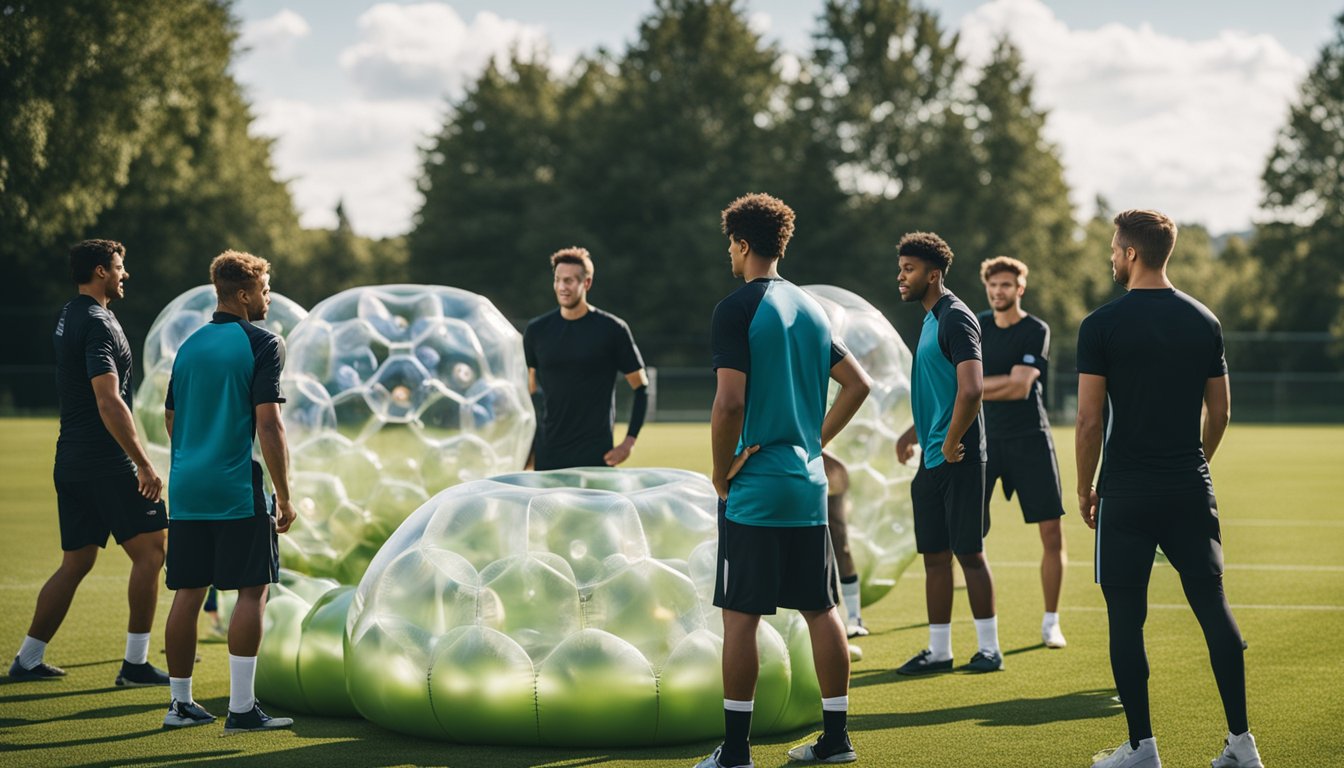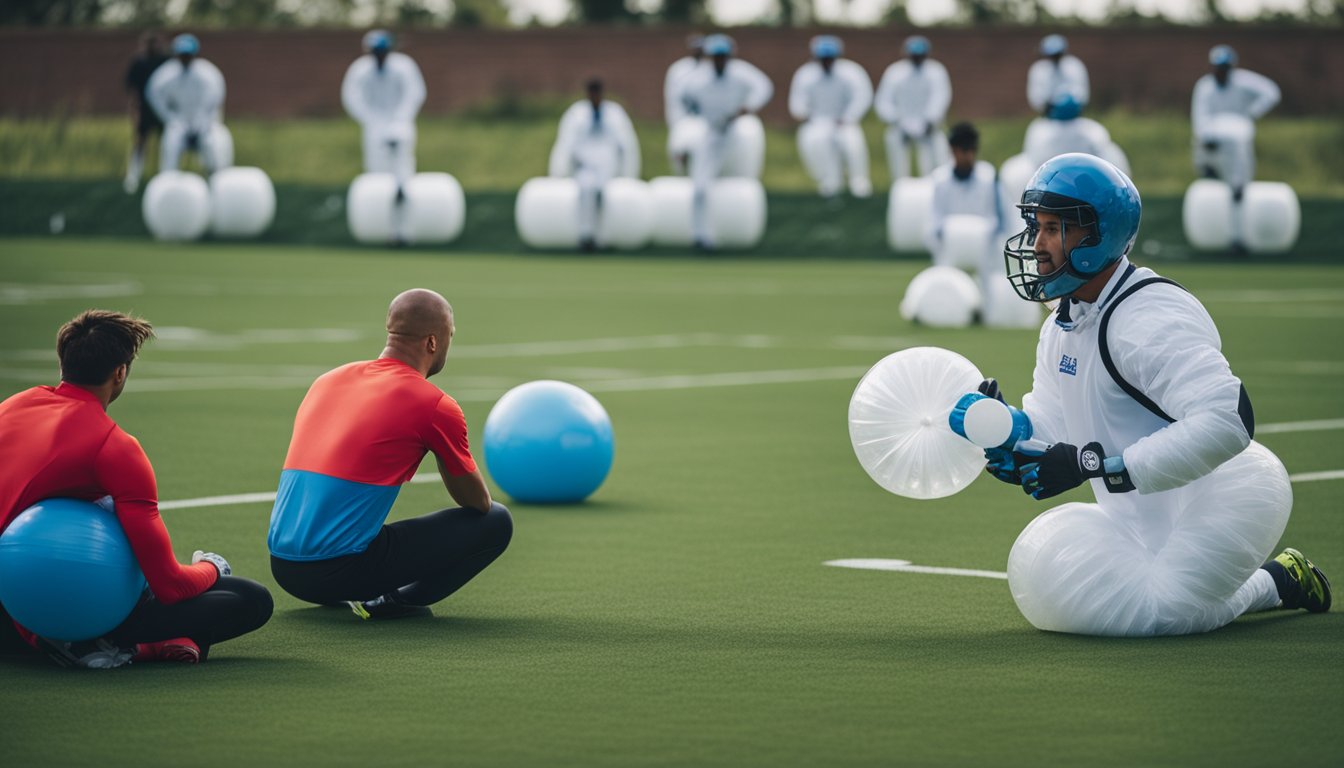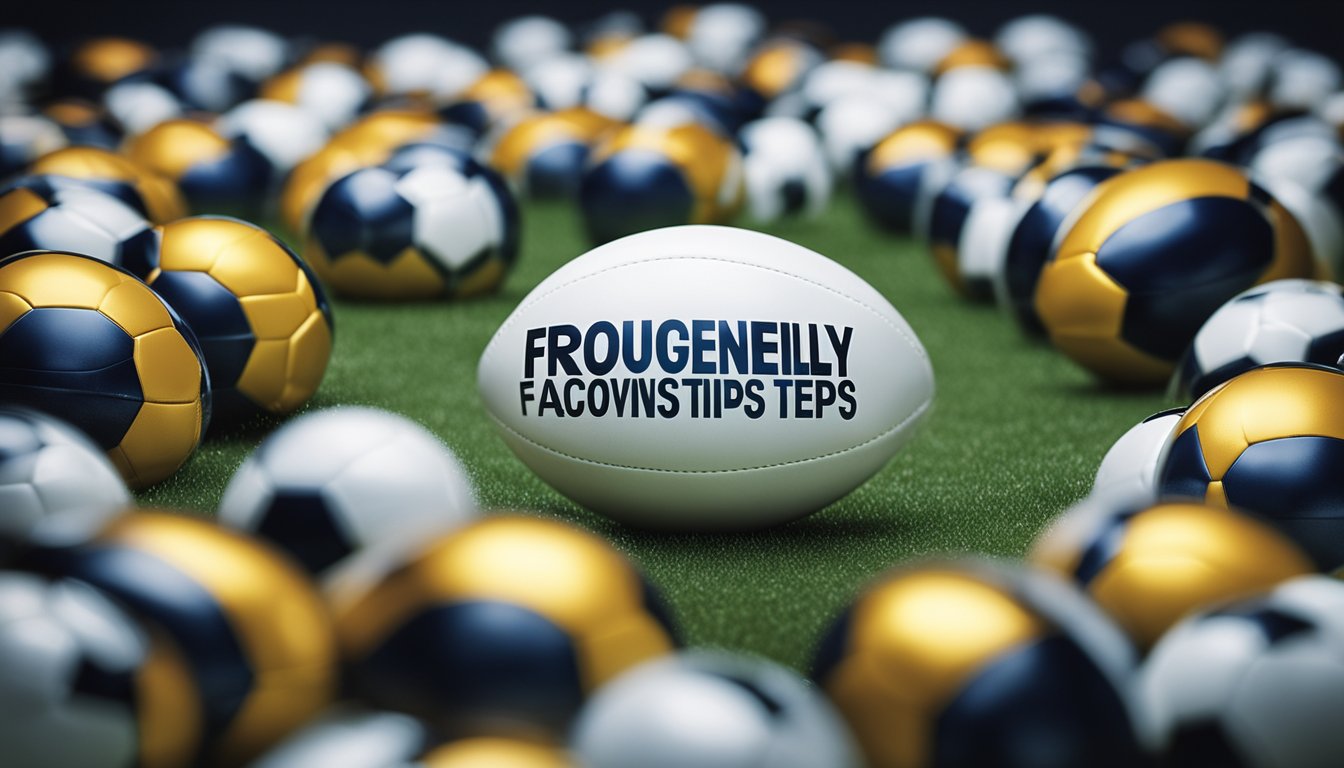Late updated: 30 Nov 2024 09:11
Written by: Emma Saunders
Bubble Football Recovery Tips for Maximum Performance: Enhance Your Game
Bubble football is a unique sport that combines the physical demands of traditional football with the fun of playing inside inflatable bubbles. The sport can be quite exhilarating, but it’s vital to prioritise effective recovery techniques to maximise performance. Active recovery methods, such as light jogging or stretching, can significantly enhance muscle repair and reduce the risk of injury. This not only improves immediate performance but also aids long-term athletic development.

Effective recovery is essential in preventing fatigue and ensuring athletes remain in peak condition. Incorporating cardiovascular activities into our warm-up and recovery routines can help maintain blood circulation and eliminate metabolic waste from muscles. This is crucial for sustaining energy levels during gameplay and protecting against common injuries associated with high-intensity sports.
Our goal is to provide the ultimate guide to bubble football recovery, equipping readers with strategies to improve their athletic performance. From understanding the basics of muscle recovery to implementing expert-approved techniques, we cover everything needed to elevate our post-game routine.
Key Takeaways
- Active recovery methods enhance muscle repair.
- Cardiovascular activities support sustained performance.
- Effective recovery protects against sports-related injuries.
Understanding the Basics of Muscle Recovery
Effective muscle recovery is crucial for optimal performance and involves several key areas: adequate rest and sleep, nutritional intake, as well as maintaining proper hydration and electrolyte levels. Each plays a critical role in reducing fatigue, aiding muscle repair, and ensuring efficient recovery after physical exertion.
The Role of Rest and Sleep in Recovery
Rest and sleep are foundational to muscle recovery. During sleep, our bodies undergo processes that repair tissue damage and promote muscle growth. This period of rest helps reduce muscle soreness and replenishes glycogen stores depleted during activity.
Ensuring we get between 7-9 hours of sleep per night can significantly minimise fatigue. Additionally, implementing rest days between intense training sessions enables muscles to recover and adapt, thus enhancing performance.
Nutritional Strategies for Optimal Muscle Repair
Nutrition is a powerful tool in muscle recovery. Consuming adequate protein is essential for muscle repair and growth. Proteins aid in the rebuilding of muscle fibres and help reduce soreness.
Including carbohydrate-rich foods post-exercise facilitates glycogen replenishment, providing energy for subsequent activities. Introducing antioxidants, such as vitamins C and E, can combat oxidative stress and support the recovery process. A balanced diet, rich in essential nutrients, ensures comprehensive recovery.
Hydration and Electrolyte Balance
Hydration is vital for muscle function and recovery. Water supports all cellular functions, including those required for muscle repair. It's crucial to replenish fluids lost during exercise to maintain performance and prevent dehydration.
Electrolytes, like sodium, potassium, and magnesium, play a key role in muscle function. Including these minerals in our recovery plan aids in reducing fatigue and preventing cramps. Regular monitoring of our hydration levels ensures our bodies remain in optimal condition for muscle recovery.
Implementing Effective Recovery Techniques

To maximise performance in bubble football, it's crucial to implement a well-rounded recovery strategy. This involves incorporating various methods like active recovery exercises, flexibility routines, and advanced recovery tools.
Active Recovery and Low-Impact Exercise
Active recovery is essential for muscle repair and reducing fatigue. We can utilise low-impact exercises such as walking, swimming, or cycling. These activities help increase blood flow and oxygen delivery to the muscles, aiding in the repair of micro-tears and reducing muscle tightness.
Engaging in these exercises at a low intensity allows our heart rate to stay elevated without causing additional stress, making it an effective strategy post-match. Moreover, this helps in maintaining physical fitness without overstressing the body, allowing us to perform at peak levels consistently.
Stretching, Yoga, and Flexibility Work
Stretching and yoga are vital for improving flexibility and preventing injuries. Incorporating yoga sessions into our recovery routine can aid in muscle relaxation and enhance overall flexibility. Poses that focus on breath work and gentle stretching contribute significantly to recovery days.
Flexibility work helps in alleviating muscle tightness and reducing the risk of muscle damage. Regular stretching sessions before and after training or matches can tremendously decrease the likelihood of injuries and support efficient muscle recovery. By prioritising these techniques, we can maintain optimal physical fitness and ensure long-term athletic sustainability.
Advanced Recovery Tools and Methods
Advanced recovery tools such as foam rollers, compression garments, and massage guns provide additional support for muscle recovery. Foam rolling aids in reducing muscle soreness by breaking down adhesions in muscle fibres, while compression garments improve circulation and aid in faster recovery.
Cold therapy, such as cryotherapy or contrast baths, helps reduce inflammation and promote healing. Rehydrating with electrolytes and using technology like GPS trackers to monitor heart rate variability are valuable for customising recovery strategies. Further, practices like meditation and using facilities like hot tubs or saunas can support relaxation and lessen recovery times. Adapting these tools into our recovery regimen is crucial to ensure resilience and readiness for our next performance.
Frequently Asked Questions

For bubble football players aiming to achieve maximum performance, understanding best recovery practices is crucial. We've gathered key insights on effective recovery strategies, equipment, and techniques to help players maintain optimum physiological condition.
What are the best practices for post-match recovery in football?
Post-match recovery involves a combination of rest, hydration, and nutrition. Cooling down with light activities such as walking or stretching helps reduce muscle stiffness. Rehydration is critical to replace lost fluids and ensure proper muscle function.
Which recovery equipment is most effective for football players?
Foam rollers, ice baths, and compression garments are popular tools. Foam rollers help release muscle tension while ice baths aid in reducing inflammation and soreness. Compression wear promotes better circulation, speeding up recovery time.
What should a footballer's recovery session entail to ensure optimum performance?
A balanced recovery session includes dynamic stretching, massage, and gentle aerobic activities. Proper stretching can prevent injuries and improve flexibility. Massages help alleviate muscle tightness and enhance blood flow.
How can football players speed up their muscle recovery after a match?
To accelerate muscle recovery, focus on adequate sleep, active recovery techniques, and proper nutrition, including protein-rich meals. Active recovery through low-intensity exercises helps in muscle repair without additional strain.
What is an ideal post-game recovery workout for a footballer?
An ideal recovery workout might start with a 10-minute jog, followed by stretching and foam rolling. This helps relax the muscles gradually. Incorporating yoga or Pilates can enhance core strength and flexibility.
How can footballers maintain endurance throughout a full 90-minute match?
Maintaining endurance requires consistent cardiovascular training and nutrition. Interval training enhances stamina, while a balanced diet featuring carbohydrates ensures sustained energy release. Managing electrolyte balance before and during games is also crucial for endurance.
